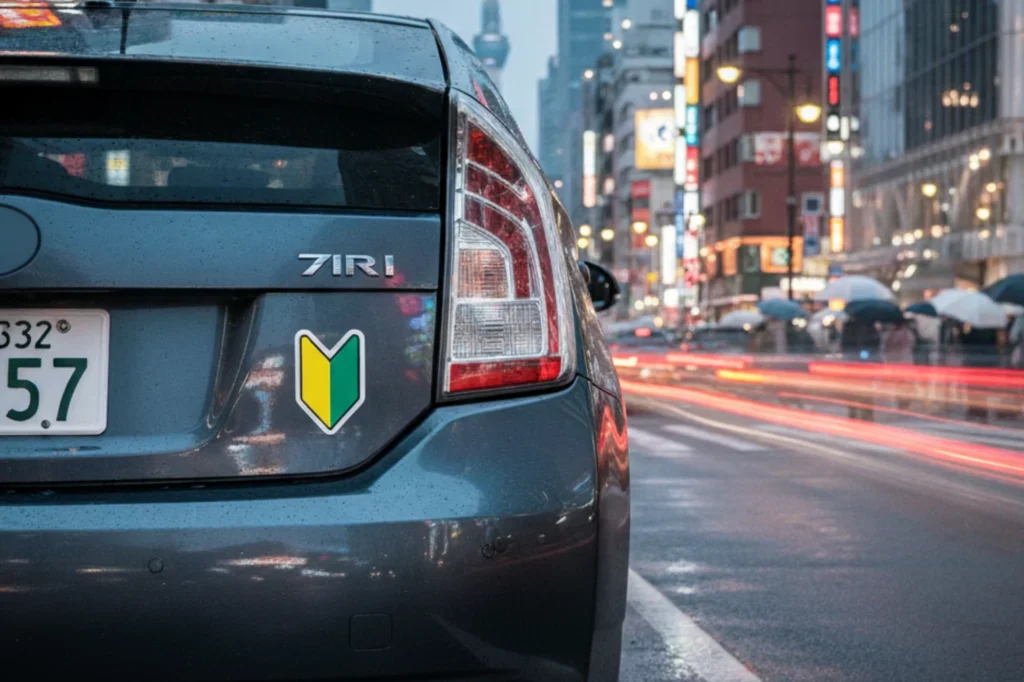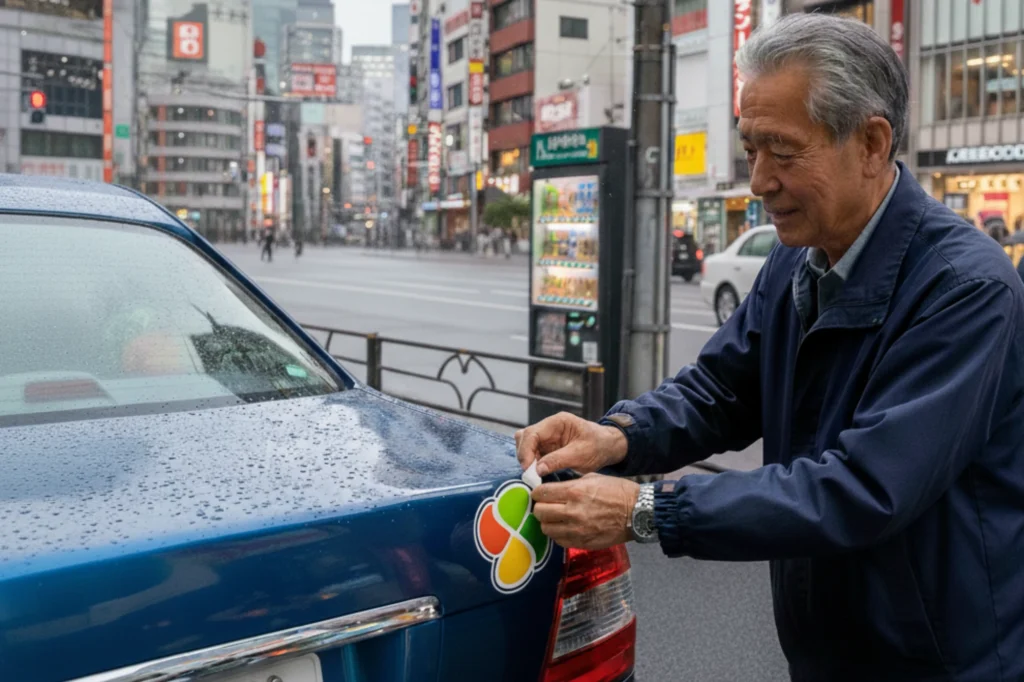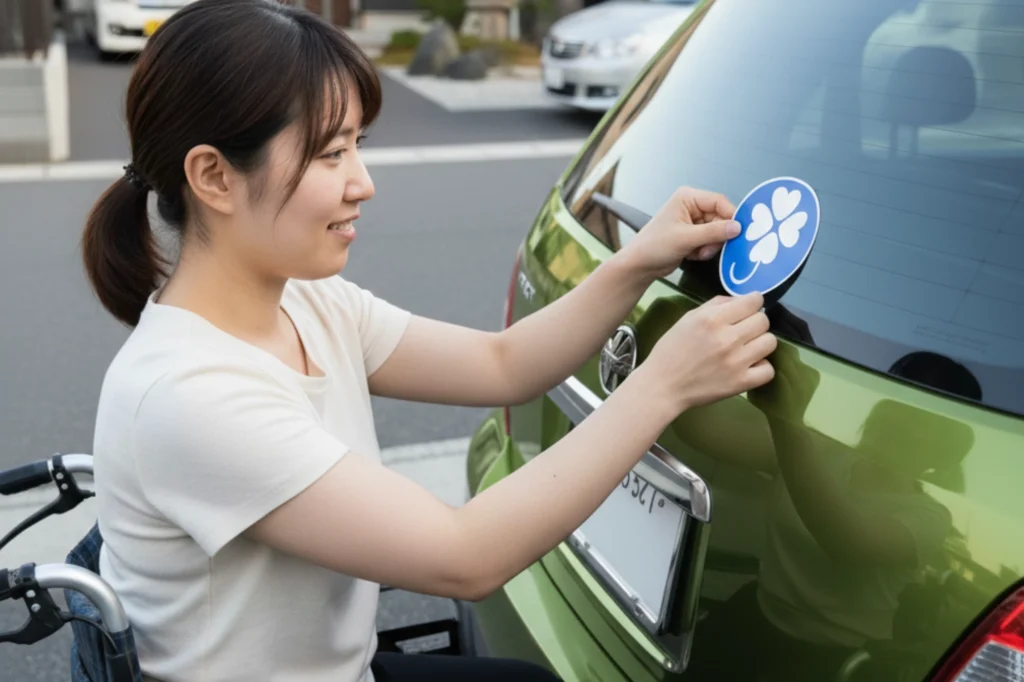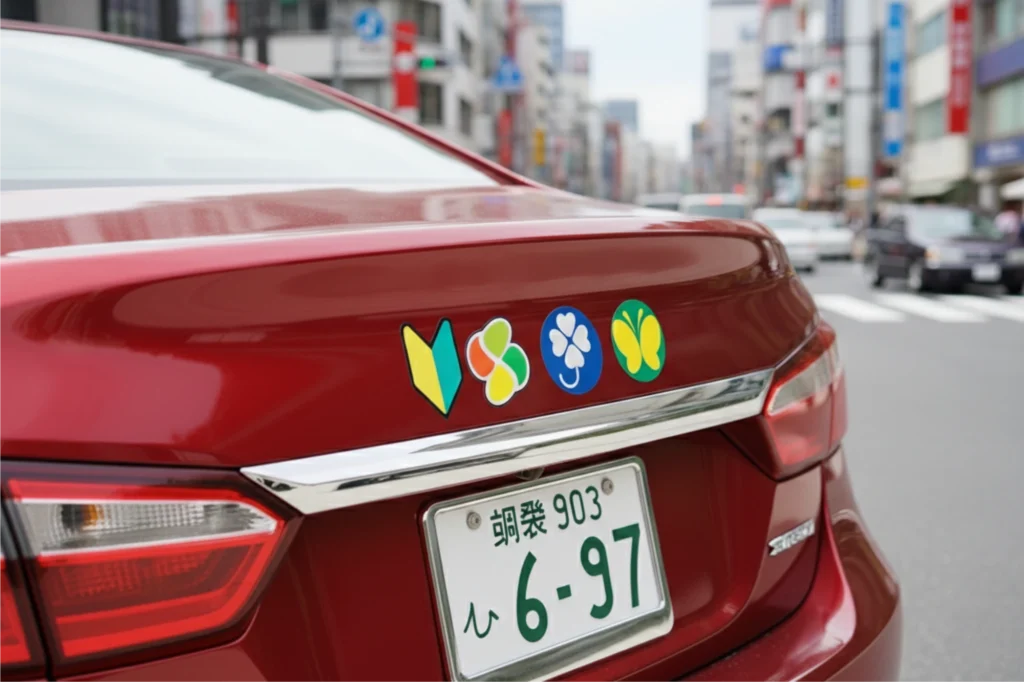In Latin America, car stickers are often regarded simply as decorative accessories or a playful way to personalize a vehicle. In Japan, however, they serve a very different purpose: these official markers convey important information about the driver and play a vital role in the country’s driving culture. Rather than simple decoration, they serve as purposeful tools that foster road safety and awareness.
Japanese Car Stickers: More Than Just Decorations
On Japanese roads, it’s common to spot cars marked with colourful V-shapes, clover symbols, or butterfly emblems. While they may look like simple stickers, each one carries a specific meaning: signaling a new driver, identifying a senior driver, or indicating that the driver lives with a disability.
The fascinating part is that this concept is starting to travel beyond Japan. Across regions like Latin America, it’s raising an important question: how might our daily driving experience change if we introduced these symbols into our own urban traffic systems?

Car Stickers: Road Symbols That Show Respect
In Japan, driving is more than just a means of getting from one place to another. It also embodies values such as respect, patience, and consideration for others. From this mindset arose the stickers that have become a familiar sight on Japanese roads, serving as markers and reminders of a mindful driving culture.
The purpose is to make other drivers aware of certain conditions, thereby fostering understanding and consideration. In this way, novice drivers have a safer learning environment, while at the same time, elderly drivers are afforded the patience they need while driving. Consequently, these stickers contribute to a more considerate and safer road culture.
Japan’s Most Popular Car Stickers and What They Signify
Below, we detail the most well-known car stickers in Japan—those that every driver should recognize and display according to their circumstances:
Wakaba o Shoshinsha (若葉 / 初心者)
New drivers in Japan must place this sticker on both the front and rear of their vehicle during their first year of driving. The term combines “wakaba” (green leaf) and “shoshinsha” (beginner). It is used on cars, motorcycles, and scooters alike. The green-and-yellow emblem alerts others that a learner is on the road and encourages patience.

Koreisha o Yotsuba (高齢者 / 四葉)
Targeted at elderly drivers, this sticker is suggested from age 70 and required from 75 onward. The original version, launched in 1997, was the “Momiji” (autumn leaf), featuring a teardrop shape in orange and yellow tones. In 2011, it was replaced by the “Yotsuba,” or four-leaf clover. Drivers over 75 who do not use it can be fined up to 50,000 yen under traffic regulations.

Chokaku Shougai (聴覚障害)
Drivers with hearing disabilities are required to display this sticker. Identified by its butterfly design, it signifies “chokaku shougai,” which translates to hearing impairment. As a result, it warns other road users that the driver may not detect surrounding sounds, so extra care is needed when driving nearby.

Shintai Shougai (身体障害)
This sticker is designated for drivers with physical disabilities. The term shintai shougai literally means “physical disability,” and its symbol—a white and blue four-leaf clover—serves as an alternative to the more familiar wheelchair icon. Under the law, both failure to display the sticker when required and unauthorized use are subject to fines of up to 50,000 yen.

Furthermore, drivers displaying these stickers are legally protected in Japan. Any act that endangers or obstructs a vehicle bearing such a decal is an offense under the law designed to safeguard drivers in special circumstances, covering both automobiles and motorcycles.
The Influence of Japanese Car Stickers Around the World
Although these signs originated in Japan, they have gradually started attracting attention in other parts of the world. Moreover, their distinctive design, combined with the message of respect they convey, has piqued the interest of drivers in various countries. For example, for some, they are a curious detail; whereas, for others, they serve as a model that could be adopted to improve road-sharing. As a result, these stickers are increasingly seen as a tool for promoting empathy and safer driving practices globally.
In Latin American cities, where traffic is often stressful and patience is scarce, therefore, imagining a system like this raises an interesting debate. Specifically, how would our everyday experience behind the wheel be different if we could instantly identify beginner drivers, elderly drivers, or people with disabilities? In addition, such a system could encourage greater understanding and safer driving behavior?

The message behind these stickers is clear: improving road safety isn’t just about more infrastructure or stricter regulations—it’s about cultivating empathy. A symbol on the vehicle serves as a gentle reminder for others to practice patience and consideration.
Beyond Symbols: Teaching Respect on the Road
Japanese car stickers are an example of how something so simple can have a significant impact on driving behavior. They serve as reminders that not all drivers are in the same circumstances and that patience and tolerance can save lives.
Maybe that’s why Japanese car stickers have evolved into more than mere decals; in fact, they are a universal language of respect. Furthermore, this system, even though it originated elsewhere, encourages us to think about how we might enhance our urban streets. Consequently, it offers a valuable example of how small, thoughtful measures can influence driving behavior.
Curious to read more about it?…
Explore our blog for in-depth information on road safety and regulations. You’ll find guidance on the importance of roadway delineation and an overview of NOM-004-SEDATU-2023, two vital resources to understand how traffic rules and signage influence everyday movement.
